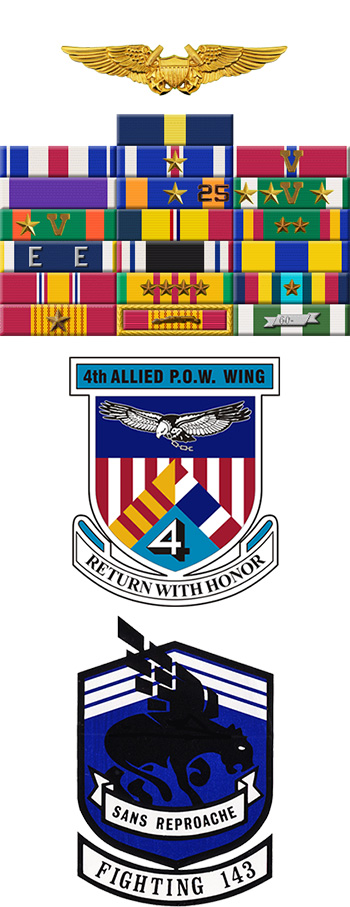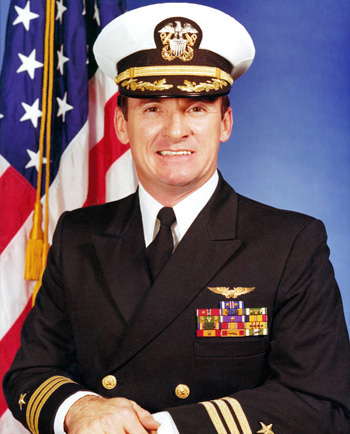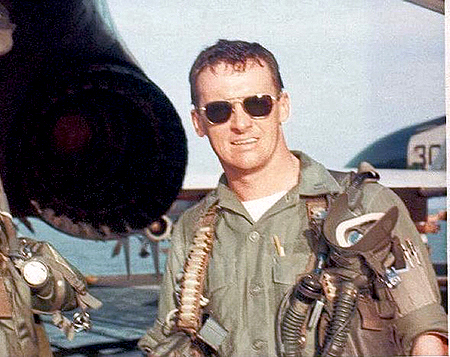
|
James B. Souder |
 |
|||
| Rank, Service | ||||
Commander O-5, U.S. Navy |
||||
| Veteran of: | ||||
|
||||
| Tribute: | ||||
J.B. Souder was born in 1940 in Elizabethton, Tennessee. He entered Aviation Officer Candidate School in December 1962 and was commissioned an Ensign in the U.S. Navy on May 17, 1963. Ensign Souder finished half of Student Naval Aviator flight training before being terminated for defective visual acuity. He then served a nine-month tour of duty with the Defense Intelligence Agency in Washington, D.C., before returning to NAS Pensacola and entering Naval Flight Officer training in January 1965. After completing NFO and Radar Intercept Officer training, Souder completed a course in Naval Law at the U.S. Naval Justice School in Newport, Rhode Island, and then began indoctrination training in the F-4 Phantom II with Fighter Squadron 121 at NAS Miramar, California, in September 1965. Souder was next assigned to Fighter Squadron 143 from March 1966 to November 1967, where he flew 201 combat missions in Southeast Asia off the aircraft carriers USS Ranger (CV-61) and USS Constellation (CV-64). LT Souder was credited with the destruction of an enemy MiG-21 fighter in aerial combat on October 26, 1967. He next served as an instructor in the Radar Intercept Officer training course for a year before leaving the Navy in January 1969 and becoming a civilian pilot. Souder re-entered the Navy on July 1, 1970, and after completing refresher training in the F-4, he served with Fighter Squadron 51 as it transitioned from the F-8 Crusader to the F-4. LCDR Souder deployed to the Western Pacific with VF-51 onboard USS Coral Sea (CV-43) in November 1971. He flew another 134 combat missions before being shot down by a MiG-21 on April 27, 1972. He was immediately captured and taken as a Prisoner of War by the North Vietnamese. After spending 335 days in captivity, he was released during Operation Homecoming on March 28, 1973. After repatriation, Souder returned to NAS Pensacola and served on the staff of the Commander of Training Air Wing Six. He was promoted to Commander and screened to command his own squadron in 1978, but a serious automobile accident forced him to forgo the command opportunity and he was assigned as the Air Intercept Officer and then Executive Officer at the Fleet Combat Training Center Pacific from 1979 to 1982. He next served as Weapons Officer onboard the USS Nimitz (CV-68) from 1982 to 1984, making two cruises to the Mediterranean Sea. His final assignment was as a Training Specialist at the Naval Training Equipment Center in Orlando, Florida, from 1984 until his retirement from the Navy on October 1, 1985. After retirement, CDR Souder flew as a co-pilot on DC-9 and MD-80 aircraft for Transtar Airlines for 8 months, flew as a pilot on DC-9s for Orion Air for one year, and was a first officer flying Boeing 737s for America West Airlines for 10 years. He accumulated over 2,600 flying hours as a NFO in the Navy, and an additional 8,500 flying hours as a civilian pilot. |
||||
|
||||


